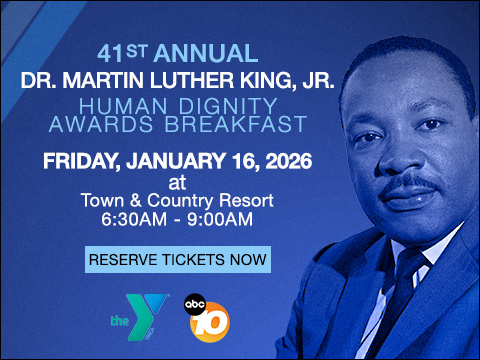SAN DIEGO (KGTV) - San Diego's minority populations are getting a disproportionately small amount of the available COVID-19 vaccines, according to numbers compiled by ABC 10News.
This comes despite a repeated emphasis on "equity" by state and local leaders regarding the distribution of vaccines.
"Since Petco Park opened as the region's first superstation, public health has used an equity lens for the continued expansion of local vaccination sites," Dr. Wilma Wooten said on Monday at a news conference at Petco Park.
At that same event, Gov. Gavin Newsom, San Diego Mayor Todd Gloria, and County Supervisor Nathan Fletcher all used the word "equity" to describe their vaccine distribution approach.
But the numbers don't back up that claim when it comes to racial demographics.
According to county and US Census data, minorities are getting a smaller percentage of the vaccine than their overall San Diego representation. The disparity is even starker when you factor in that minority groups have been hit the hardest by COVID-19 cases and deaths (see table below).
Those numbers infuriate local minority leaders.
"The whole world is impacted by COVID-19," says JoAnn Fields, the Director of the Filipino Resource Center. "We've never addressed something like this. But the (racial) disparity has always been there. COVID-19 has just magnified that."
"We need to do a better job, and we're not," says NAACP Health Committee Chair Dr. Jerome Robinson, MD.
"To be honest with you, it's not surprising," adds Nancy Maldonado, the Chicano Federation CEO. "This is the work that we've been doing for years. We've been trying to shine a light on these differences and this systemic oppression that exists."
Minority leaders don't lay all of the blame on county Officials. Instead, they say several factors contribute to what they call a "Vaccine Gap." They include:
- Language barriers
- Cultural mistrust of vaccines and government
- Systemic Racism in the healthcare system and beyond
- Technology access issues
- Lack of vaccination sites near minority populations
"We cannot do things as we've always done them," says Dr. Robinson, who highlighted the fact that the status quo has racial inequity built-in. "We have to think of new ways to do things if we're going to get this virus under control."
Maldonado says the first step must be reaching minorities where they are. That means putting out information in multiple languages, setting up more vaccine sites in easy to access community centers like churches and schools, and engaging leaders of the minority community to be the messengers for the vaccine.
"It's motivation to make sure that these inequities that have been highlighted don't get overlooked or don't get swept under the rug," she says. "Then we make true systemic changes to make sure that we never end up here again."
The issue is even more complicated among the Filipino population. Fields says it's impossible to know precisely how they've been affected by the virus or how they're faring when it comes to vaccines because the county lumps Filipinos in with the "Asian" category.
"We are the second largest ethnic group in San Diego," Fields says. "And it seems like we're invisible ... When we are not seen, we are not counted, we are not resourced, it's like we don't exist."
She's calling for the county and state to desegregate the data and make Filipino its own separate column. She would also like to see her group take on a larger voice within the county's response. She even pointed out that Monday at Petco Park, while equity was the buzzword, only Mayor Gloria, who identifies as "Native American-Latino-Filipino-Dutch" on his Twitter profile, represented any Asian group.
"I would ask you, who the Asian Pacific Islander community was there at the table? Who was advocating for us, who was invited?" she says.
For his part, Governor Newsom admits the state has a long way to go towards vaccine equity. He says because the initial rollout focused on healthcare workers, the numbers would naturally be skewed since that employment sector doesn't fully reflect the state's diversity.
All of the leaders present on Monday say their goal is to bring the percentages back in line from now on.
California recently granted tens of millions of dollars to 110 community-based organizations and another $40 million to create statewide "culturally competent" messaging when it comes to outreach.
As far as access, San Diego has 20 vaccination sites spread across the county, with a plan to open more.
Dr. Robinson would like to see some future sites happen in predominately black churches.
"Right now, the Tubman-Chavez center is only open for vaccines two days a week, from 9:30 am - 3:30 pm," he says. "We have big churches, we have the Jacobs center, we have other places where we can have vaccinations given seven days a week from seven to seven."
Maldonado from the Chicano Federation adds that Latinos are starting to become more accepting of the vaccines. She calls it a "slow yes" from the community. She's hopeful a renewed focus on equity will bring about a solution.
"I think the county took the right step in partnering with community-based organizations that have earned the trust of the community," she says. "I think building upon that will be the next step."
Newsom has also said he plans to put a larger focus on the racial vaccine gap. He plans to release state-wide data this week with demographic breakdowns of who is getting the vaccine.
"That's part of our three-legged stool," he said Monday. "(It's) not only fast and efficient, we want equitable distribution of the vaccine. We recognize we have more work to do in that space."





